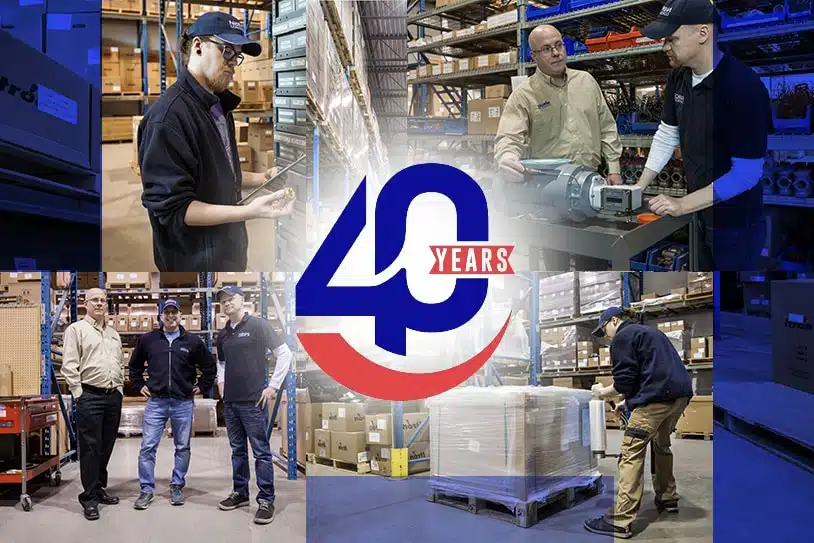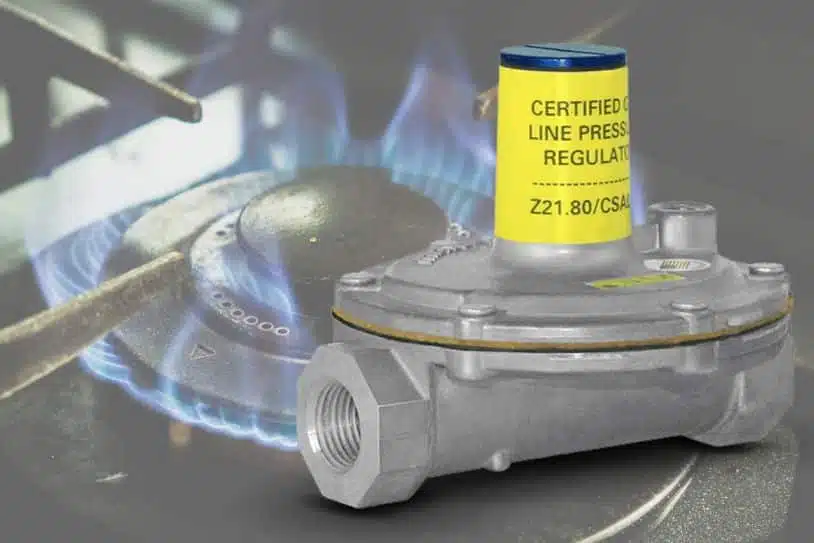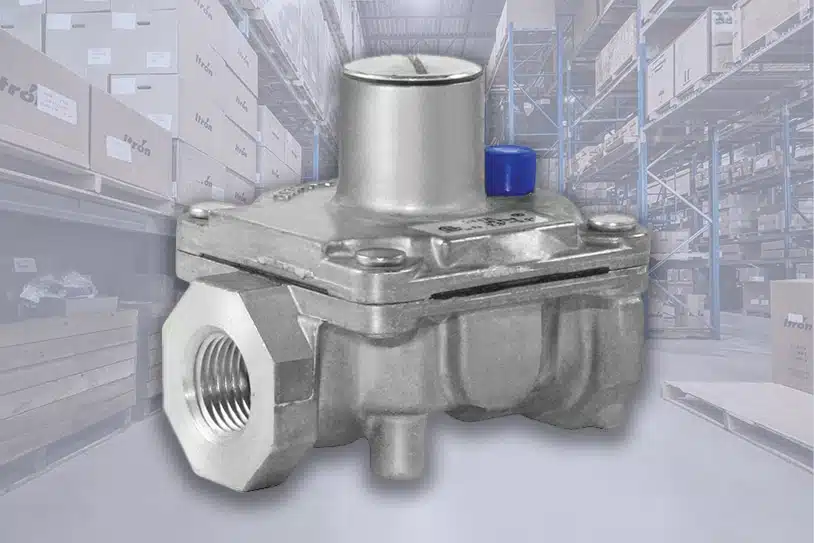Difference Between Relief Valves and Back Pressure Regulators
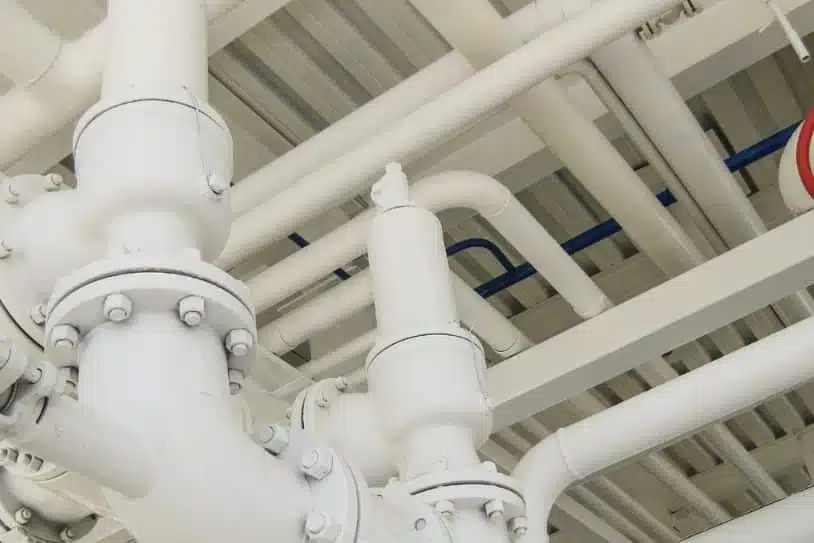
Relief valves and back pressure regulators are two types of pressure regulators used to control pressure levels in gas applications. However, although they do a similar job, back pressure regulators and relief valves are very different. In this article, we will give you more information about these two types of gas regulators to help you better understand their differences.
What Is a Gas Pressure Relief Valve?
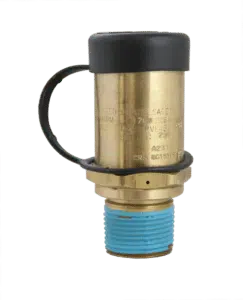
How Does a Pressure Relief Valve Work?
In any system, the pressure relief valve is designed to open at a predetermined set pressure. The diaphragm expands and pushes on the valve seat if the gas pressure exceeds the preset limit. That provides an escape route for the gas, reducing pressure in the system. When pressure levels return to normal, the valve closes.
Types of Pressure Relief Valves
There are two main types of pressure relief valves:
- Direct Acting Pressure Relief Valve: It is a basic pressure control containing one poppet and one spring. The direct-acting pressure relief valve can limit the highest of pressures as it handles abrupt, transitory pressure increases brilliantly. They are also great as pilot control for other valves.
- Pilot-operated Pressure Relief Valve: Works well as emergency relief in high-flow or high-pressure feed overpressure situations. Unlike the direct relief valve, an operator opens this valve when the pressure reading hits unsafe levels.
Where Are Pressure Relief Valves Used?
Here are some of the instances where pressure relief valves are used:
- Chemical processing: Applied to stop explosions caused by unexpected pressure spikes.
- Oil and gas industry: Regulates the transfer of oil and gas and minimizes the possibility of pipeline explosions.
- Petrochemical industries: Control the flow of dye, detergents, plastics, and other additives at set quantities and pressure to produce various commodities.
- Power generation: The change in pressure allows them to drive turbines and generate electricity optimally.
Importance of Pressure Relief Valves
Pressure relief valves are vital for regulating the flow rate, and fluid movement path, and keeping the system functioning optimally. Similarly, pressure relief valves prevent the collapse of the hydraulic system if the pressure rises above the designed capacity, so it protects life, environment, and property.
What Is a Back Pressure Regulator?
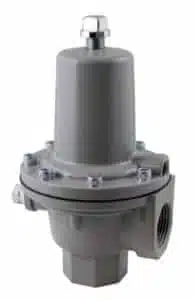
How Does a Back Pressure Regulator Work?
A back pressure regulator contains a pilot, diaphragm, and valve. Gas from the upstream push on the diaphragm when the pilot plug lets it through. As the flow pushes up on the plunger, the gas pushes down on the diaphragm, keeping the valve closed since the diaphragm has a larger surface area than the plunger.
However, upstream pressure forces the diaphragm up when the pressure exceeds the set pressure, which closes the pilot plug. That vents gas from the top of the diaphragm, regulating the upstream pressure.
A BPR emphasizes a steady state of pressure; it’s not a case of on or off. It will keep adjusting its position to keep the inlet pressure at optimum levels, only opening the diaphragm to release excess pressure.
Types of Back Pressure Regulators
There are three main types of back pressure regulators:
- Spring-type: Its springs exert pressure on the regulator’s diaphragm to separate from its walls, enabling gas flow.
- Piston-type: Functions similarly to spring-type BPRs, but uses a piston instead of a spring.
- Poppet-type: Instead of a spring or piston, it uses a small metal ball called a poppet. As the gas flows into the regulator, the poppet moves towards the center of the regulator until it reaches the end of its travel. Once it comes to the end of its stroke, it seals off the opening in the regulator.
What Are the Applications of Back Pressure Regulators?
Back pressure regulators are used in the following situations:
- Hospitals: Medics and other health professionals use BPR to control oxygen flow in hospitals.
- Automotive industry: Regulate fuel flow in vehicles.
- Compressor stations
- Separators
Importance of Back Pressure Regulators
Back pressure regulators are crucial for preventing over-pressurization of downstream pneumatic and hydraulic equipment. They also have the sensitivity to respond to the slightest upstream changes and are the go-to solution for keeping flow rate constant, perfect for accurately measuring the quantity of gas
Main Difference Between Pressure Relief Valve and Back Pressure Regulator
Although both control pressure, they go about it in vastly different ways.
The pressure relief valve is a safety feature that opens or closes whenever too much pressure needs releasing. On the other hand, the back pressure regulator is not a safety measure—it is an intrinsic part of the system meant to keep it at a steady pressure.
In short, a back pressure regulator keeps the pressure at a level that will enable the downstream system to work as required. It keeps adjusting according to information received from pressure sensors to keep the pressure at functional levels.
Conclusion
As gas regulators, the relief valve and the back pressure regulator are crucial in relieving pressure from a gas supply system. The only difference is the pressure relief valve acts as a safety feature to release pressure buildup. Conversely, the back pressure regulator is a part of the system to maintain a predetermined pressure.
Norgas Controls provides gas regulators, gas valves, and gas meters for natural, propane, compressed, and sour gases across Canada. Our experts can help you choose the right product for your application. Feel free to contact us for more information or to tell us about your needs by completing a quote request.
